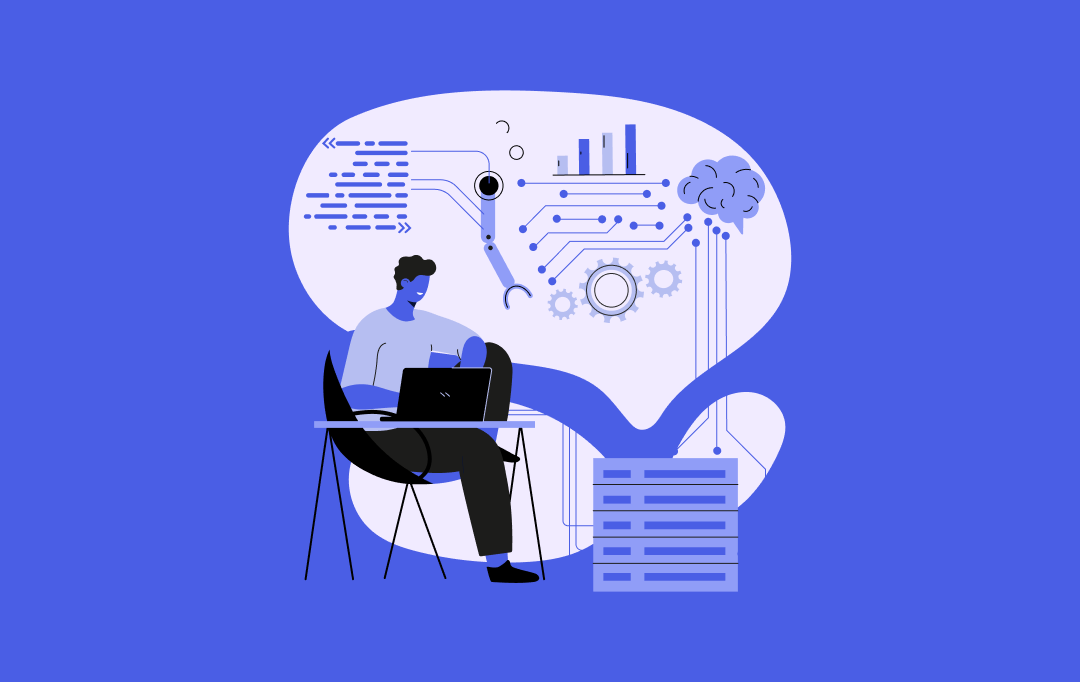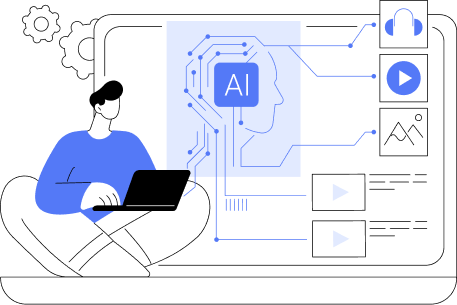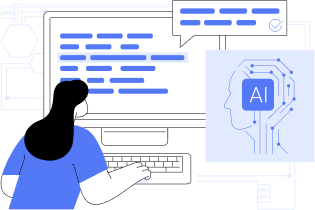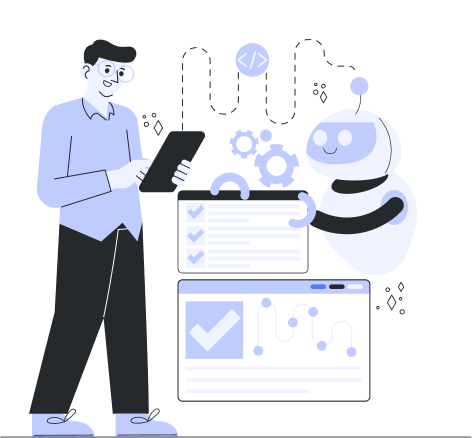Slashing downtime, boosting margins, automating workflow, and stealing your market share. You must be thinking that these buzzwords are Silicon Valley’s hype. No, these are the silent revolutions hitting Main Street industries. From manufacturing deploying demand forecasting to controlling production lines, healthcare tailoring predictive care and driving better outcomes.
The success mantra—these industries are quietly weaponizing Adaptive AI.
Like traditional AI, this brewing tech revolution is not a static and rule-bound artificial intelligence. It is a dynamic, self-learning beast that evolves with the data it chows down on, spitting out accurate solutions faster.
Adaptive AI Differs from Traditional AI
| Aspects | Traditional AI | Adaptive AI |
|---|---|---|
| Learning Approach | Learn from static data and pre-defined models. | Learn and adapt to real-time data. |
| Deployment | Manual updates are needed regularly. | Self-updates with minimal manual intervention |
| Responses | One-size-fits-all business model | Tailor responses based on the context. |
| Suitability | Suitable for a stable environment | Ideal for an evolving environment. |
In 2025 and beyond, deploying traditional static-based AI will be like using a flip phone in a 5G fight —you’re roast. To keep yourself abreast of industry leaders: Adaptive AI is the kick you need, learning and evolving to turn pain points into profit.
Ignoring Adaptive Artifical Intelligence is Like Losing Competition
1. Gartner predicts that by 2026, companies leveraging adaptive AI will outpace their rivals by a jaw-dropping 25%.
2. According to Precedence Research, the global adaptive AI market size is forecasted to reach around USD 30.51 billion by 2034.
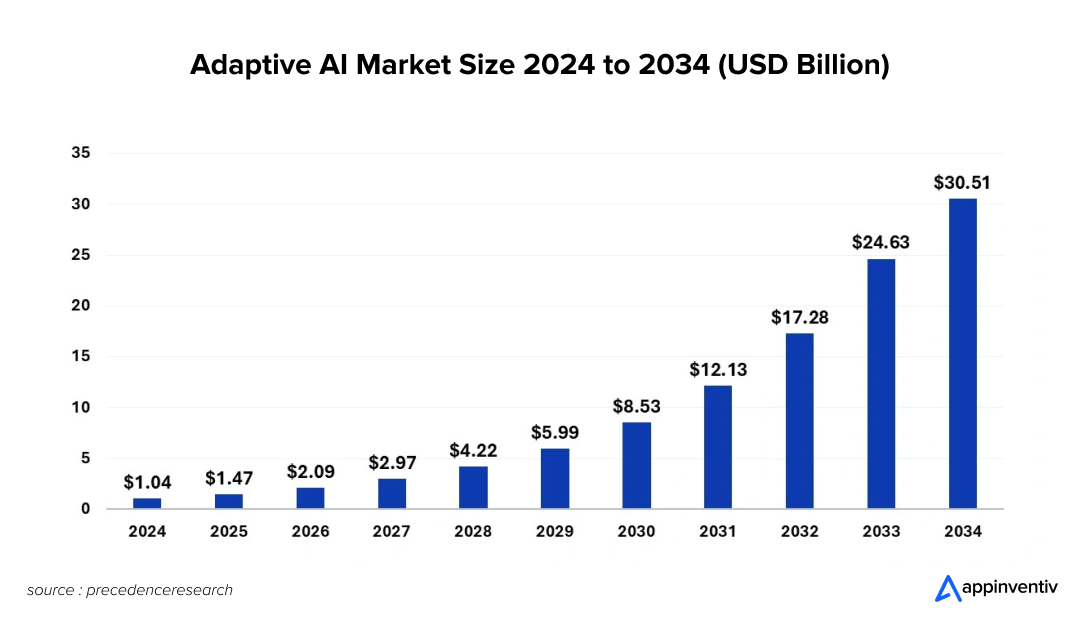
3. Yahoo Finance stated that 97% of global enterprise IT and operations leaders would increase AI investments in the form of Adaptive AI Through 2025.
Thus, deploying adaptive AI is like tearing through your business like a goddamn freight train on steroids. In this blog, we’re diving into ten use cases and real-world adaptive AI examples, showing how this game-changing tech is flipping the script. Let’s roll.
Components of Adaptive AI Technology
Adaptive AI is a level ahead of traditional AI. But what makes it tick? At its core, this game-changing tech is built on a handful of key components that work together like a well-oiled machine—think real-time learning algorithms, dynamic data processing, and seamless integration with your existing systems. Understanding these components is your ticket to unlocking adaptive Artificial Intelligence that doesn’t just keep up but keeps you ahead.
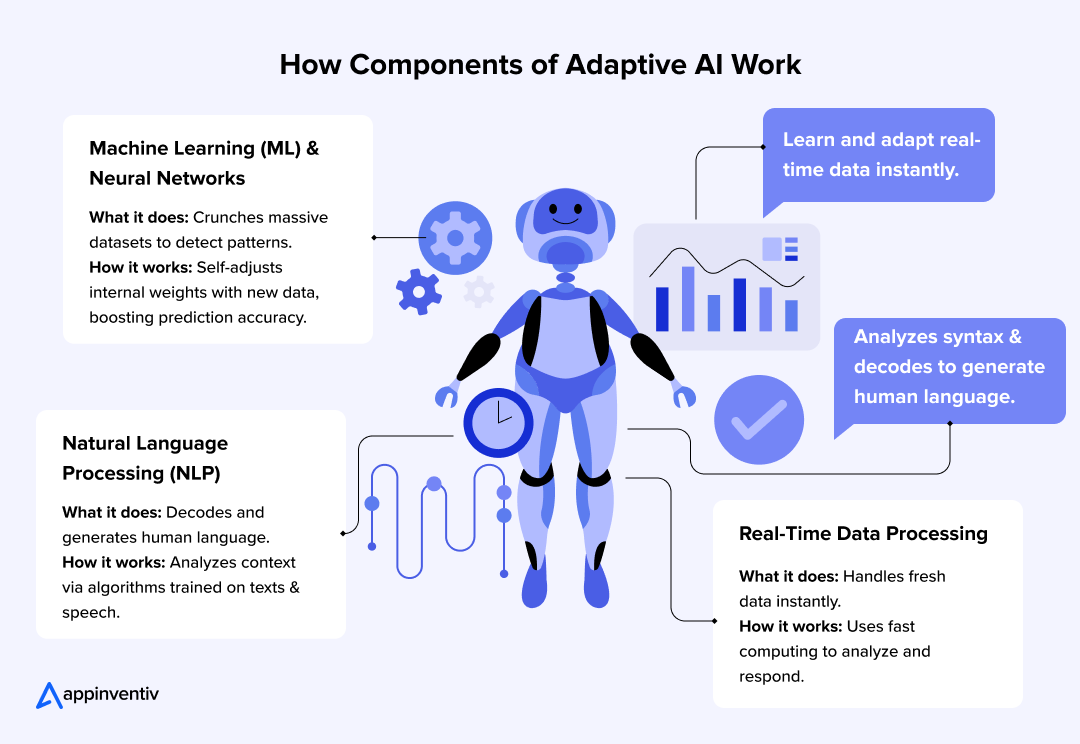
- Machine Learning (ML) and Neural Networks
Machine learning algorithms and Neural Networks crunch huge new datasets and understand patterns and trends. They tweak themselves concerning adjustments and improve accuracy in predictions and decisions over time.
- Natural Language Processing (NLP)
NLP makes the process easier and quicker by breaking down human language into bits—and using algorithms to analyze syntax, semantics, and context. It then generates responses or actions, mimicking natural conversation.
- Real-Time Data Processing
Real-time data processing ingests fresh data streams instantly, running it through fast algorithms to analyze and act. It uses high-speed computing to spot changes and trigger responses without delay.
Adaptive AI Use Cases & Real-Life Examples in Industries
What’s the game behind the adaptive AI adoption across industries—its unparalleled ability to learn, evolve, and respond to real-time challenges. Instead of a futuristic vision, adaptive AI has become a game-changer for industry players like Ecommerce, healthcare, and manufacturing. Let’s dive into the adaptive ai use cases across industries and real-life adaptive AI examples, showcasing how it’s reshaping how businesses operate, enhancing human potential, and delivering once-impossible solutions.
Healthcare
AI’s adaptability in different environments is the biggest advantage of deploying adaptive ai models in healthcare. Adaptive AI in healthcare transforms diagnostics, personalized medicine, and patient care. There are different use cases of Adaptive AI in Healthcare. Below, we’ll explain how Adaptive AI is applied in the three specified use cases and provide real-life examples.
1. Predicting Patient Outcomes
Hospitals and healthcare organizations are deploying adaptive AI to predict disease progression or outcomes, such as hospital readmissions or mortality risk. Due to its ability to continuously learn from evolving data like lab results and electronic health records (EHRs), analyzing patterns quickly and refining predictions helps the industry enhance accuracy.
Real Example: Sepsis Watch System
Duke Health developed the Sepsis Watch System backed by adaptive artificial intelligence to predict sepsis onset in hospitalized patients. Various clinicians deploy this system by integrating it with EHRs to monitor vital signs and lab results based on individual patient baselines and hospital-specific infection patterns.
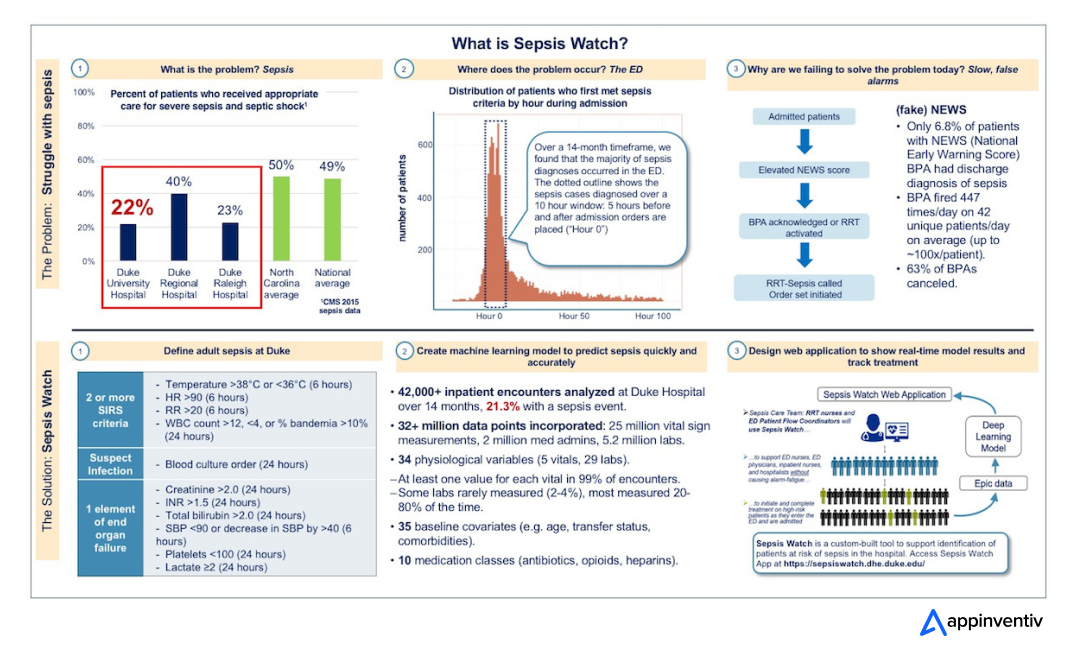
It alerts clinicians up to 12 hours before sepsis symptoms fully manifest, reportedly reducing mortality rates by enabling earlier interventions.
2. Personalizing treatment plans based on real-time patient data
Hospitals and clinics are now focused on providing hyper-personalized treatment based on real-time patient data. Thus, they deploy adaptive AI tech to process real-time data from wearables, patient-reported symptoms, and clinical measurements.
- It adjusts recommendations dynamically as a patient’s condition changes—for instance, tweaking medication dosages or suggesting alternative therapies based on side effects or efficacy.
- By learning from each patient’s response and comparing it to similar cases, the AI ensures treatments remain effective and personalized over time.
Real Example: IBM Watson for Oncology
Memorial Sloan Kettering Cancer Center deploys IBM Watson for Oncology. They use adaptive AI by incorporating real-time patient data (e.g., tumor response from scans or blood markers) to refine chemotherapy or immunotherapy recommendations.
This helps doctors adjust a lung cancer patient’s treatment plan after detecting early signs of resistance to a drug, suggesting a switch to a targeted therapy based on genetic mutations—improving the patient’s progression-free survival.
3. Optimizing Hospital Resource Management
AI-driven adaptive intelligence helps hospitals optimize resource allocation by predicting patient inflows, procedure durations, and equipment needs based on historical trends, current hospital data, and external factors (e.g., weather or flu season).
It adapts to unexpected changes—like a sudden surge in emergency cases—by reassigning staff or reallocating ventilators in real-time. This reduces wait times, prevents overburdening staff, and ensures critical resources are available where needed most.
Real Example: CareComm at Tampa General Hospital
Tampa General Hospital, based in Florida, deploys CareComm, a command center platform that leverages Adaptive AI to optimize hospital resource management. This center integrates real-time data from EHRs, bed management systems, and staff schedules to create a “digital twin” of the hospital.
The Adaptive artificial intelligence continuously learns from incoming data—such as patient admissions, discharges, and surgical schedules—dynamically adjusting predictions and resource allocations.
Finance
Adaptive AI models have the ability to learn and adjust to changing environments and fresh data. This capability has an impact on finance industries helping them boost their workflow. In the finance sector, people often use adaptive AI to enhance fraud detection, improve trading strategies, and upgrade customer service.
1. Real-Time Fraud Monitoring
Tech innovations bring various types of data security risks, including financial fraud. Addressing this concern is the need of the hour. Finally, financial organizations have reached the space where they’ve achieved an equilibrium to prevent fraud detection rather than curing it—adaptive AI in finance.
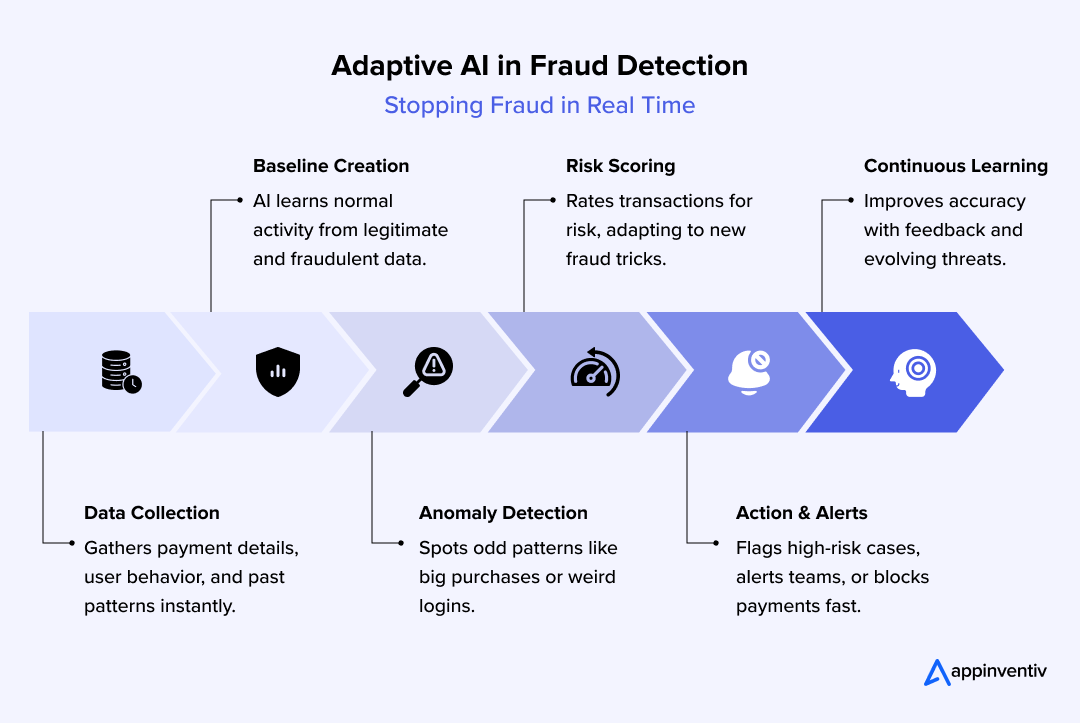
This smart ai adaptive learning platform monitors financial transactions in real-time, analyzing new data sets and patterns such as sophisticated phishing schemes or synthetic identities across millions of data points to detect anomalies indicative of fraud. This dynamically enhances the accuracy of its detection algorithms, reducing false positives and catching threats faster.
Real Example: PayPal
PayPal deploys Adaptive AI in its fraud detection system. Their AI-driven adaptive intelligence adapts to new fraud patterns—like account takeovers during the 2020 pandemic shopping surge. This adaptive learning helps the system to identify potentially fraudulent transactions by dynamically updating its models based on real-time user activity and global fraud trends, maintaining a low false-positive rate and protecting users effectively.
2. Algorithmic Trading Adjacent to Market Conditions
Adaptive AI analyzes vast datasets in algorithmic trading—market prices, news sentiment, economic indicators, and historical trends—to execute trades at optimal times. It adjusts its strategies in real-time according to market conditions shifts, such as volatility spikes or geopolitical events, learning from each trade’s outcome to refine future decisions. This adaptability allows it to capitalize on opportunities and mitigate losses in ways static algorithms cannot.
Real Example: Numerai
Numerai, a hedge fund company, leverages Adaptive AI for algorithmic trading. It aggregates machine learning algorithms from data scientists worldwide, adapting its core system to market shifts. Numerai deploys adaptive AI to recalibrate trading strategies based on sudden Bitcoin price drops and regulatory news during crypto market turbulence in 2023.
3. Personalized Financial Advice via Chatbots
Various financial players leverage adaptive AI to improve the customer experience and services. Thus, Adaptive AI-powered chatbots have come into existence to provide tailored financial support.
Financial companies and banks use adaptive AI systems to look at their customers’ details. This includes checking accounts how people spend where they invest, and any big changes in their finances – like getting a new job or when the market goes down. The AI does this right away, not waiting around. It then gives advice that improves as it learns more about each person. This could be tips on saving money where to put their cash, or how to handle debt. The more the AI gets to know someone the better its suggestions become.
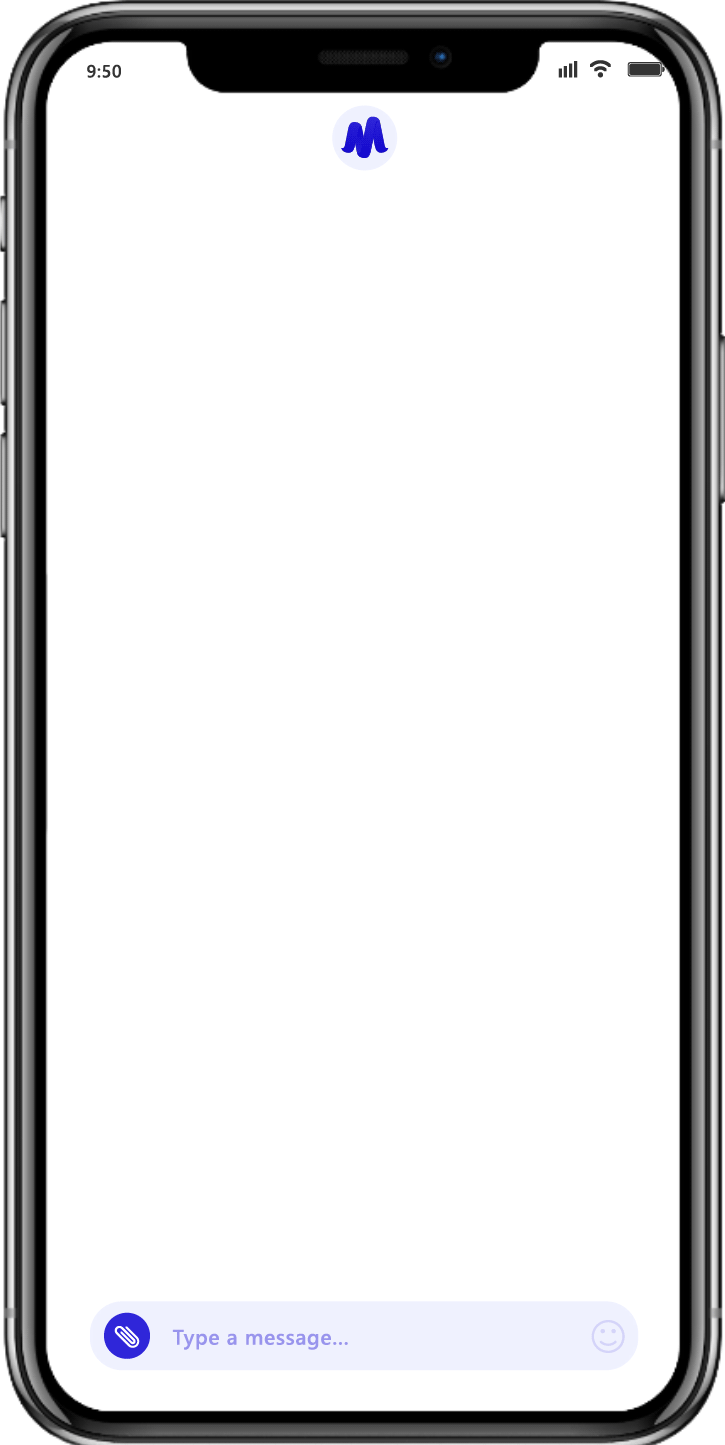
Mudra leverage adaptive artificial intelligence-powered Chatbot App – Mudra budget management solution. The system analyzes users’ spending patterns by fetching data from linked debit and credit card histories and forecast future spending based on historical data and user habits. This empowers users with actionable insights.
Dive into the Mudra story — an adaptive AI-powered chatbot app making budgeting a breeze with intuitive features and functionalities.
Manufacturing
AI’s adaptability in different environments make Adaptive AI system a game-changer for manufacturers. Various manufacturers leverage Adaptive AI in optimizing production lines, predictive maintenance, and quality control.
1. Predicting Equipment Failures
Companies use Adaptive AI to spot machine breakdowns before they happen and come up with plans to fix them. This AI looks at past repair records and current data from sensors in the machines, like how much they shake how hot they get, and how much pressure they’re under. It keeps getting better at predicting issues by learning from new patterns and helps companies take care of their equipment before it breaks down and costs them money.
Real Example: General Electric (GE)
General Electric (GE) uses Adaptive artificial intelligence through its Predix platform at its manufacturing facilities. In 2022, it predicted a turbine blade machining tool’s failure 48 hours in advance by adapting to subtle shifts in vibration data caused by a new alloy, allowing maintenance to be scheduled during a planned downtime, saving an estimated $1.2 million in potential production losses.
2. Production Processes Based on Demand
Manufacturers use smart adaptive AI service experts to make production better. They mix supply chain data, what the market might want, and how much stuff they have to change how they make things on the fly. The AI can change how work flows, adjust the machines, or switch up what’s being made right away—dealing with problems like not having enough materials or too many orders all at once—making sure things run smooth and there’s not a lot of extra stuff lying around.
Real-Example: Siemens
Siemens leverages adaptive artificial intelligence in its digital factory – Amberg Electronics Plant in Germany. In 2023, the factory plant faced a global shortage while the demand surged. Thus, siemens leverages adaptive AI and reconfigure assembly lines to prioritize products with available components, adjusting production speeds, and even sourcing alternative materials.
3. Enhancing Product Quality Through Defect Detection
Adaptive AI steps up product checks by studying info from cameras sensors, and imaging systems on the assembly line to spot flaws as they happen. It gets smarter with every group, tweaks itself to changes in stuff, brightness, or how fast things get made, and points out problems such as scrapes, not lining up right, or dirt way quicker and with more precision than unchanging systems or folks checking by eye.
Real Example: BMW
BMW uses Adaptive AI models in its Dingolfing, Germany plant, where it produces the 5 Series and electric vehicle components. Integrated into the assembly line, the AI-powered vision system inspects car body welds and paint finishes. During a 2023 production run of the i5 electric model, BMW adapted to a new matte paint type, identifying micro-scratches invisible to earlier models, reducing defect rates by 25%.
Energy Providers
Adaptive AI lets energy suppliers react on-the-fly to the twists and turns of energy setups, like mixing in renewable sources and handling the up-and-down needs of power. These providers use the smart ai adaptive learning platform to predict upkeep needs, make the grid work better, and guess future energy needs.
1. Balancing Energy Supply and Demand
Smart grids, weather predictions, and how folks use power get a good look from Adaptive AI. Energy helpers use it to keep the lights on and off just right. It gets smart about changes, like when the sun plays peekaboo with clouds or everyone cranks up the AC. This clever tech picks the best energy mix.
Real Example: National Grid ESO (UK)
National Grid ESO over in the UK got hooked up with IBM for some smart tech collaboration and kicked off this thing called the Active Network Management system. By the time 2022 was wrapping up, they had this bad boy tapping into live numbers from all the green energy places, like windmills and sun juice catchers, and matching it up with how much power people were using all over the grid. Come 2023, the folks at National Grid were all chuffed because they saw their grid steadiness get a 15% bump even when the weather went all wild, all thanks to the smarts of their AI’s adjustable skills.
2. Forecasting Consumption Patterns
Energy providers use Adaptive AI to forecasts energy consumption by processing historical usage data, weather conditions, economic factors, and real-time inputs like smart meter readings. Based on the learning of the new data and patterns, it refines its predictions and ensure correct projections. This enables energy providers to plan distribution efficiently, preposition resources, and minimize waste by aligning supply with anticipated needs.
Real Example: EDF Energy
EDF Energy leverages Adaptive AI for consumption forecasting as part of its AI-driven demand forecasting system. The system uses machine learning to analyze data from millions of smart meters, weather patterns, and market trends. This allowed EDF to optimize hydroelectric and nuclear output, improving distribution efficiency.
Ecommerce
AI’s adaptability in different environments make Adaptive AI popular in Ecommerce. It is reshaping industry by delivering personalized experiences and optimizing business strategies.
1. Recommending System Based on User Behavior
Adaptive AI runs recommendation engines by analyzing real-time user behavior like what users do in real-time, search stuff, click things, and what they buy, plus things that depend on the situation like what time it is or what gadget they’re on.
With info on when and what gadget you’re using, it gets better at figuring out what you like by noticing your choices and what’s trending . It keeps up with changes like what’s hot each season or new fave products. This means it’s good at suggesting stuff you’ll want making customers more interested and bumping up how much they buy.
Real Example: Amazon
Amazon uses Adaptive AI to power the “Customers who bought this also bought” suggestion tool. This system getting better all the time and as of 2025, crunches through billions of bits of info every day.
2. Adjusting Prices to Match Demand or Competition
Adaptive AI rocks at changing prices as things happen looking at what customers want, what rivals charge, the stock we got, and what the market’s doing. It tweaks prices lightning-fast bumping them up when folks are clamoring for stuff, or dropping them to keep up with the competition—all while picking up lessons from how sales go down to get even smarter about setting prices down the line. This kind of quick thinking pumps up profits and keeps businesses in the e-commerce game sharp and on point.
Real Example: Walmart
Walmart uses Adaptive AI for dynamic pricing across its online platform. The real-time adjustment, adapting to both competition and inventory, reportedly increased online sales volume and keeps Walmart agile in a cutthroat market.
The Future of Adaptive AI
Adaptive AI’s future seems set to shake things up. It’s all about how these smart adaptive AI systems can learn, change, and get better at handling fresh info or different scenarios without someone having to hold their hand all the time. These aren’t your average AI—they’re like the next level because they keep up with whatever’s being thrown at them, whether it’s new user habits or some weird patterns they’ve never seen before. So, what’s in store?
Industries are Gonna Snap this AI adaptive learning platform: More and more places are gonna start using Adaptive AI. We’re talking areas like hospitals, banks, cars, you name it. Take hospitals, for instance. This tech could mean doctors tailor-make your treatment as they learn what works for you on the fly. And for banks, it’s all about keeping your cash safe by staying one step ahead of the sneaky types trying to swipe it.
Adaptive AI is on its way to becoming an smart buddy in our everyday lives and businesses always picking up new stuff and getting better in ways old-school AI just can’t match. This path hinges on big wins in the math behind it, the gear it runs on, and how we handle the moral questions it brings up.
- Enhanced Personalization: Expect smarter virtual helpers as these systems get better. They won’t just know what you like, they’ll guess what you need from little changes in how you act and things around you like the weather, the news, or what’s happening in the stock market.
- Integration with Edge Computing: Adaptive AI’s next big thing might be getting it onto things like phones and IoT gadgets. Quick decisions could happen right there without needing the big cloud systems as much. It might lead to big changes in stuff like cars that drive themselves and gadgets in your house that are smart.
- Boosted Efficiency and Going Green: Adaptive AI might cut down on what we use and the energy it chomps on by not having to teach the same stuff over and over. This fits right in with the big push for tech that doesn’t hurt the planet.
- Head Scratchers and Doing What’s Right: The way these smart adaptive AI systems can change gets you wondering who’s in charge, whether they play favorites, or what weird stuff might happen without us wanting it. The more they change the more we gotta ensure they’re clear, responsible, and get along with what humans think is important. Bet on seeing more digging into this and rules coming up to tackle the head scratchers.
- Teaming Up with Other Cool Tech: So, Adaptive AI might team up with super-smart things like quantum computing or brainy gear, which would speed up how it deals with complicated everyday info and get better at acting like a human.
Appinventiv: A Home for Bespoke Adaptive AI Development Services
At Appinventiv, we transform ideas into intelligent, future-ready solutions with our custom adaptive AI development expertise. Specializing in adaptive artificial intelligence, we empower businesses to innovate, optimize, and thrive in a dynamic digital world. Here’s why we’re your go-to partner for bespoke AI excellence:
- Tailored AI Solutions: We craft AI systems designed to fit your unique business needs, from predictive analytics to natural language processing, ensuring seamless integration and maximum impact.
- Adaptive Intelligence Expertise: Our AI Development Services doesn’t just work—it evolves. We build adaptive models that learn, optimize, and scale with your business, keeping you ahead of the curve.
- End-to-End Adaptive AI Development: From ideation to deployment, we handle it all—strategy, design, adaptive AI development, and ongoing support—delivering a hassle-free experience and robust AI products.
- Industry-Driven Innovation: Whether it’s healthcare, finance, retail, or beyond, our AI solutions are fine-tuned to solve real-world challenges, driving efficiency and growth across sectors.
- Proven Global Impact: Trusted by startups and Fortune 500 companies alike, our 1000+ delivered projects showcase our ability to turn AI visions into measurable success.
- A Huge Bunch of Smart People: At Appinventiv, a whopping 1600+ experts bring together smarts in tech and deep know-how of different fields. This combo helps us whip up AI solutions that are super modern and in sync with what you want to achieve in your business.
- Proven Client Success: Our client testimonials speak for our success in maintaining excellence for our clients. They appreciate timely delivery, exceptional performance, and a high-quality solution.
Partner with Appinventiv to unlock the power of bespoke AI—where innovation meets adaptability, and your business meets its full potential.
FAQs
Q. What is Adaptive AI?
A. Adaptive AI refers to artificial intelligence systems designed to learn, evolve, and adjust their behavior based on new data, changing environments, or user interactions. Unlike traditional AI, which relies on static models trained on fixed datasets, adaptive AI continuously refines its algorithms in real time, making it more flexible and responsive.
Q. What is an example of a practical use of Adaptive AI?
A. A practical use of adaptive AI in manufacturing is optimizing production line efficiency. Imagine a factory assembling electronics: an adaptive AI system monitors real-time data from sensors—like machine performance, material quality, and worker output. As it detects patterns, such as a specific machine slowing down under certain conditions or a recurring defect tied to temperature fluctuations, it adjusts on the fly.
Q. What is adaptive AI solution development?
A. Adaptive AI solution development refers to the process of creating artificial intelligence systems that can dynamically adjust and evolve based on new data, user interactions, or changing environments, ensuring optimal performance and relevance over time.
Q. How Adaptive AI is transforming the creative industries?
A. Adaptive AI is revolutionizing creative industries by enhancing personalization, streamlining workflows, and unlocking new forms of expression. It learns from data and user interactions, adapting to trends, preferences, and feedback in real time, which makes it a game-changer for fields like advertising, music, film, and design.
Q. How Businesses Can Transform Through adaptive AI?
A. Adaptive AI can transform businesses by driving efficiency, enhancing decision-making, and enabling agility in a way that static systems can’t match. It learns from real-time data and evolving conditions, allowing companies to stay ahead of the curve across operations, customer engagement, and innovation. Here’s how it works in practice:
- Optimizing Operations: Businesses can use adaptive AI to streamline processes dynamically. In supply chain management, for instance, it analyzes variables like weather, demand spikes, or shipping delays, adjusting inventory or logistics on the fly. A retailer might avoid stockouts during a sudden trend because the AI adapts faster than a human planner could.
- Personalizing Customer Experiences: Adaptive AI tailors interactions to individual preferences, boosting loyalty and sales. In e-commerce, it refines product recommendations as it learns from browsing habits or purchase history—think Amazon’s engine but smarter over time. A small business could deploy a chatbot that gets better at resolving queries with every conversation.
- Enhancing Decision-Making: By sifting through vast datasets and adapting to new patterns, it provides sharper insights. In finance, adaptive AI might detect fraud by recognizing anomalies that shift daily, outpacing rigid rule-based systems. A manager gets real-time, evolving forecasts instead of stale reports.
- Reducing Costs: Automation with adaptability means less waste and fewer errors. In manufacturing, adaptive AI tweaks machine settings to minimize energy use or material scrap as conditions change, saving money without sacrificing quality.
Q. What is the role of adaptive ai in transforming industries?
A. Adaptive AI plays a pivotal role in transforming industries by injecting flexibility, intelligence, and real-time responsiveness into processes, products, and strategies.
- Manufacturing: In industries like manufacturing, adaptive AI optimizes workflows by adjusting to variables—machine wear, supply disruptions, or demand changes—on the fly.
- Finance & Healthcare: Adaptive AI in finance and healthcare sifts through complex, evolving datasets to spot trends or risks—like fraud patterns or patient symptoms—faster and more accurately than static models.
- Energy & Logistics: Across energy or logistics, it adapts to unpredictability—think optimizing power grids during outages or rerouting shipments around delays.
Q. How do adaptive AI use cases across industries improve efficiency?
A. Adaptive AI use cases across industries has streamlines processes by continuously refining its algorithms. In manufacturing, it optimizes supply chains by adapting to real-time demand changes. In transportation, it enhances route planning by learning from traffic patterns. In customer service, it refines chatbot responses, reducing human intervention and boosting operational efficiency across these industries.
Q. What is the use of adaptive AI tools?
A. Adaptive AI tools are software or platforms powered by artificial intelligence that can learn, evolve, and adjust their behavior based on new data, user interactions, or changing environments. Unlike static AI, adaptive AI tools with fixed models, these dynamically refine their algorithms, making them versatile for tasks requiring real-time adaptability.
Q. What are some examples of adaptive AI use cases across industries?
A. Adaptive AI, which learns and evolves based on new data, has diverse applications. In healthcare, it enhances diagnostics by adapting to patient data trends. In finance, it improves fraud detection by adjusting to emerging patterns. In retail, it personalizes customer recommendations based on shifting preferences, showcasing its versatility across sectors.
Q. What are the benefits of adaptive ai in marketing?
A. Adaptive AI has got some serious pluses for marketing that shake things up for how companies chat with folks and make their ad stuff work better. ‘Cause it’s super smart and can tweak things as it learns stuff on the fly adaptive AI brings real perks to the table:
- Hyper-Personalization: Adaptive AI digs into what customers do online—their clicks, buys, or chats—and custom-tailors stuff just for them. It’s like tweaking email subjects or suggesting items they might dig now, which cranks up the interest levels. So, say a shop might start selling more by whipping up deals to match what every person digs, like snap right away.
- Real-Time Campaign Optimization: This cool tech tweaks how you sell stuff while you’re still doing it, based on how well it’s working. Like, if an ad’s a flop with folks adaptive AI’s all over it—shifting cash to a spot that’s killin’ it or mixing up the ad words while you’re still in the game so you get the most bang for your buck, no waiting on people.
- Predictive Insights: Studying trends and habits gives a heads up on upcoming stuff—like sudden demand jumps or new types of customers. Marketers get the edge by creating targeted promos, like kickstarting trending product deals before the other guys even notice.
- Enhanced Customer Experience: Those chatbots and virtual helpers that get their smarts from flexible AI? They’re catching on more and more with each chat sorting out problems better and better. That’s how you earn trust and keep folks returning changing single buys into solid loyalty.


- In just 2 mins you will get a response
- Your idea is 100% protected by our Non Disclosure Agreement.
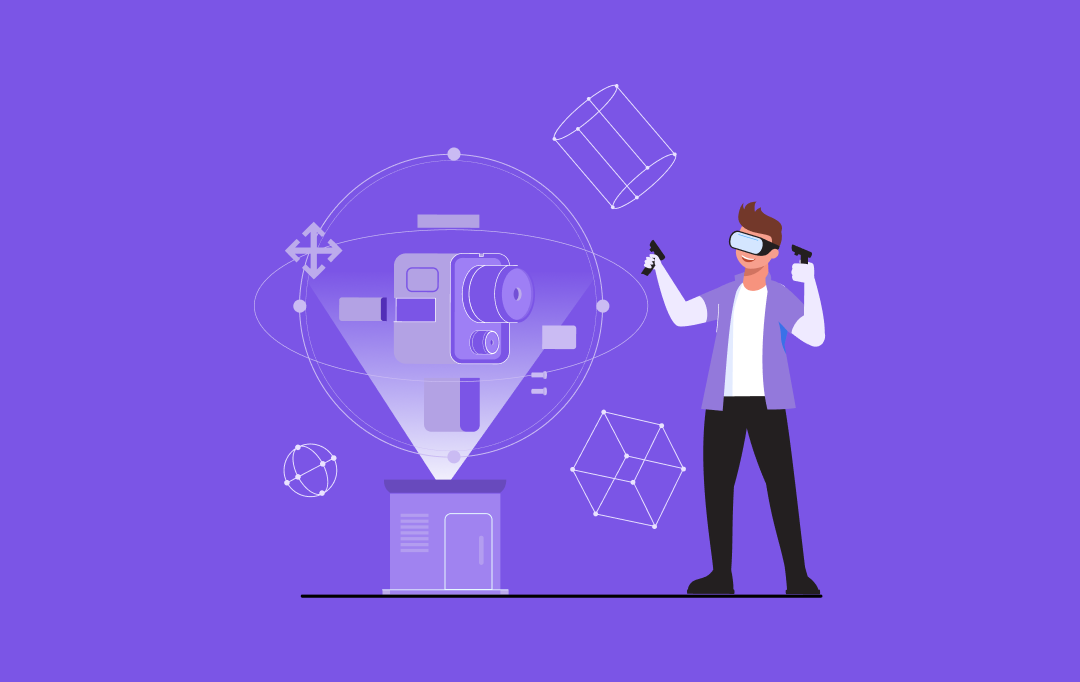
10 Use Cases and Examples of How Extended Reality (XR) is Driving Innovation Across Industries
Imagine a factory where engineers diagnose machinery issues using 3D holograms or a hospital where surgeons rehearse complex procedures in a fully immersive virtual space before operating on a real patient. These scenarios are not distant possibilities - they are happening today and are powered by Extended Reality - XR use cases. As a convergence…
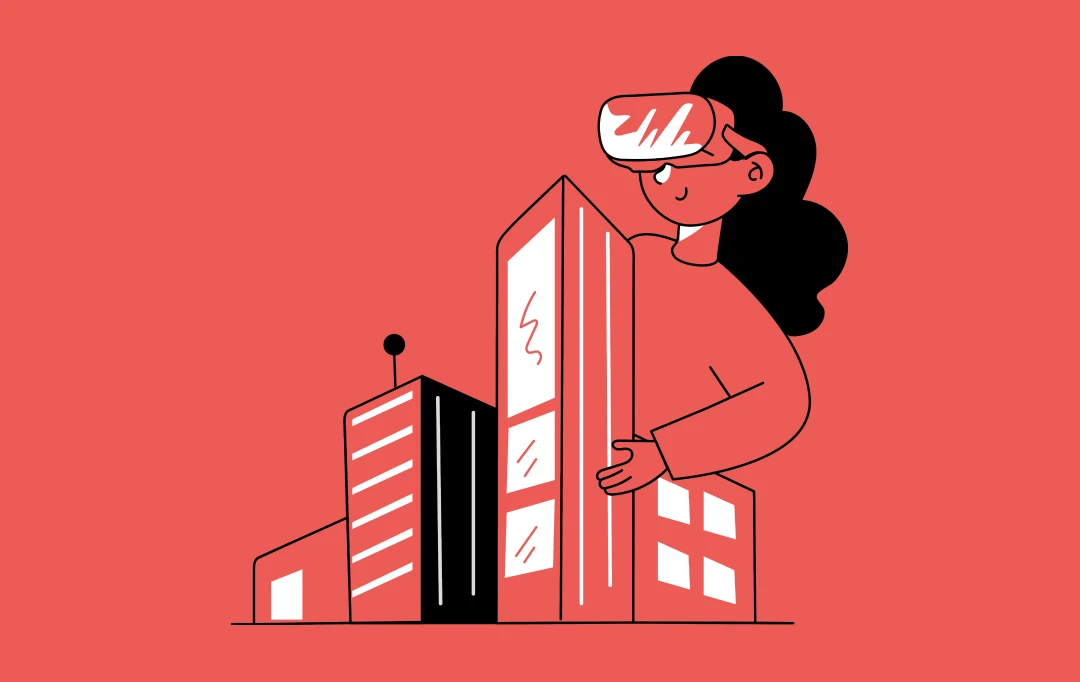
AR/VR in Construction - 10 Use Cases of How Augmented and Virtual Reality is Shaping the Industry
The use of extended reality technologies is one of the growing trends in the expanding domain of construction technology. As the sector gradually adopts more sophisticated practices, virtual and augmented reality in construction have emerged as revolutionary solutions. With compelling advantages like planning, marketing, and training, AR/VR technologies are transforming the face of construction. Prescient…

How AR VR is Shaping the Food and Beverages Industry - 10 Use Cases and Real Examples
The food industry is on a trajectory of unprecedented growth, driven by shifting consumer preferences, cutting-edge technologies, and a growing emphasis on sustainability. As consumers increasingly seek convenience, personalization, and transparency, the industry is rapidly evolving to meet these demands. Innovations in food production, distribution, and retail are reshaping the landscape, positioning the sector for…
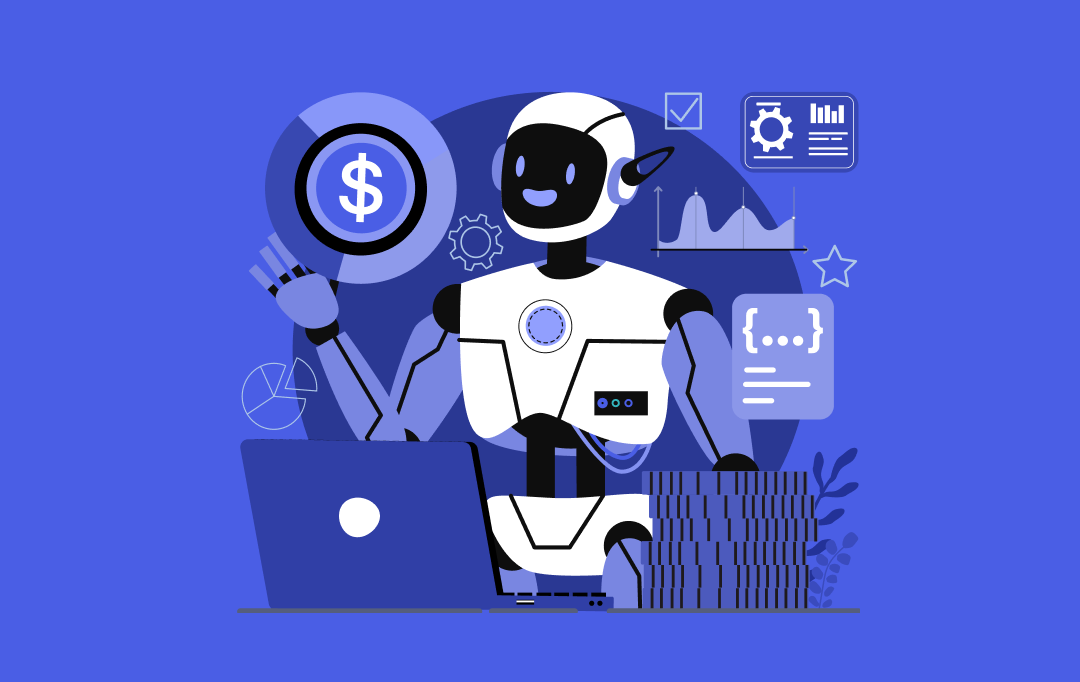
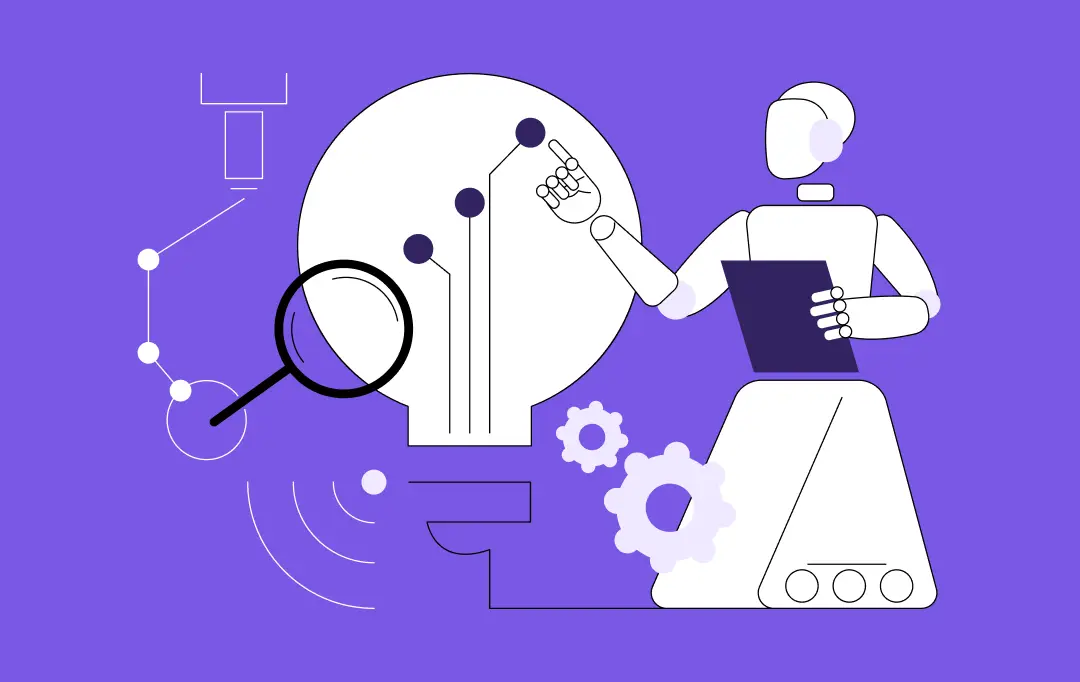






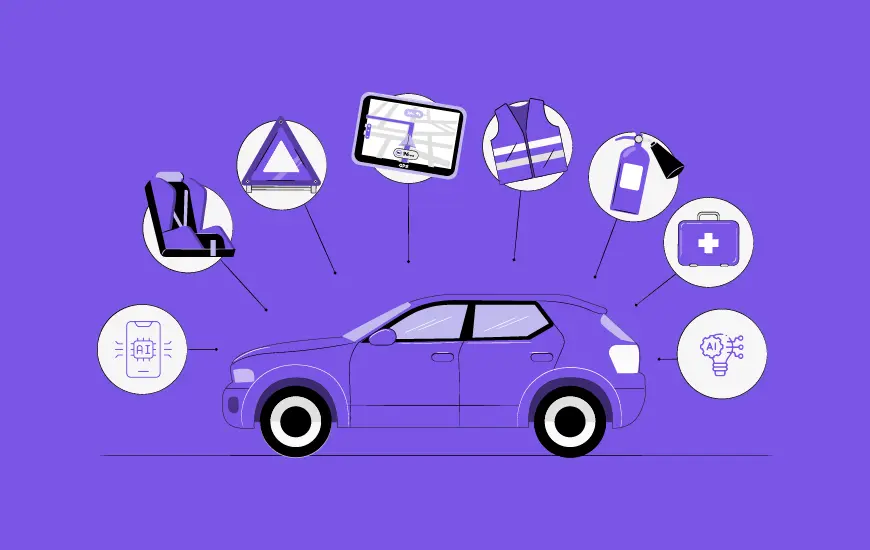

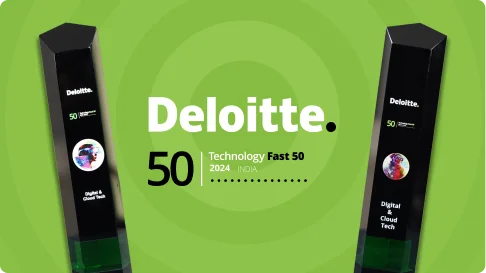
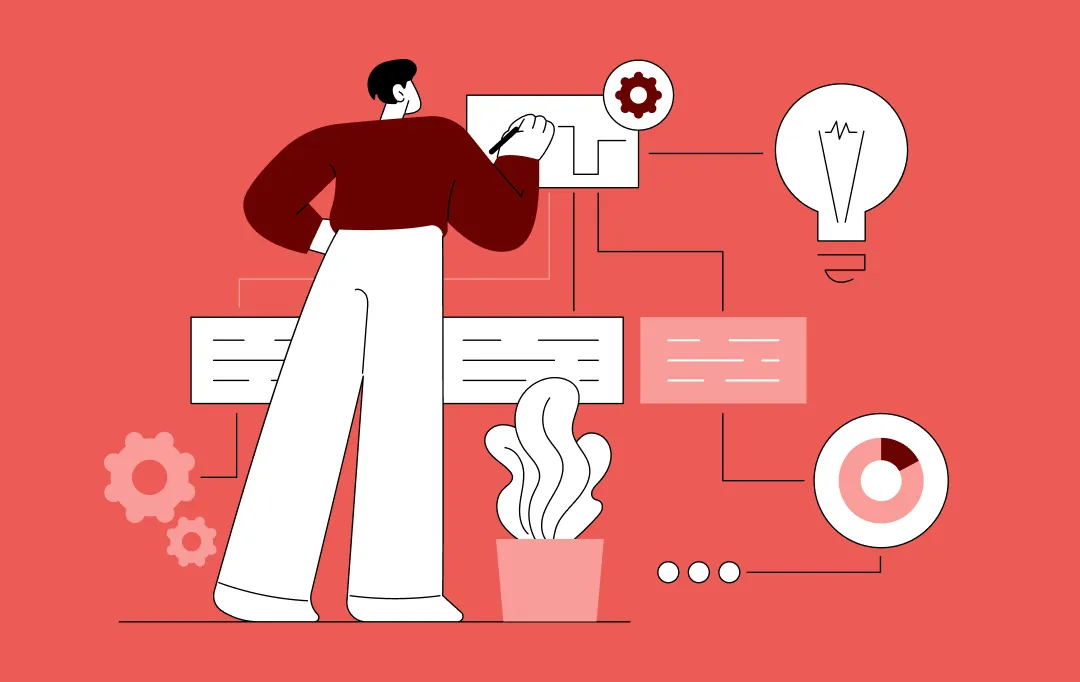
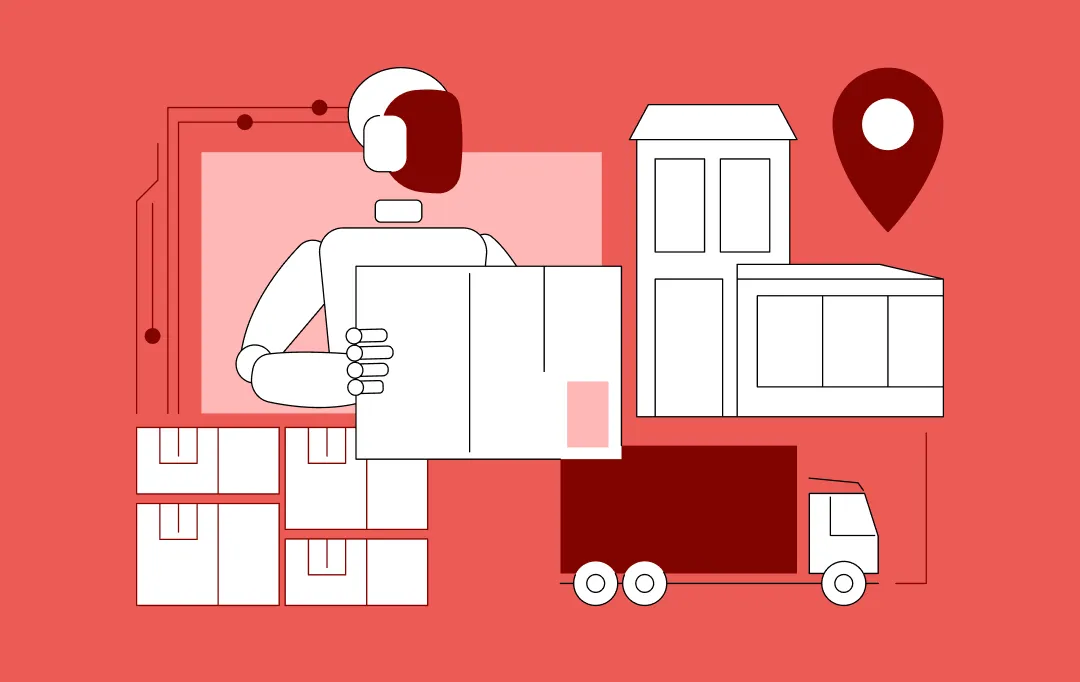
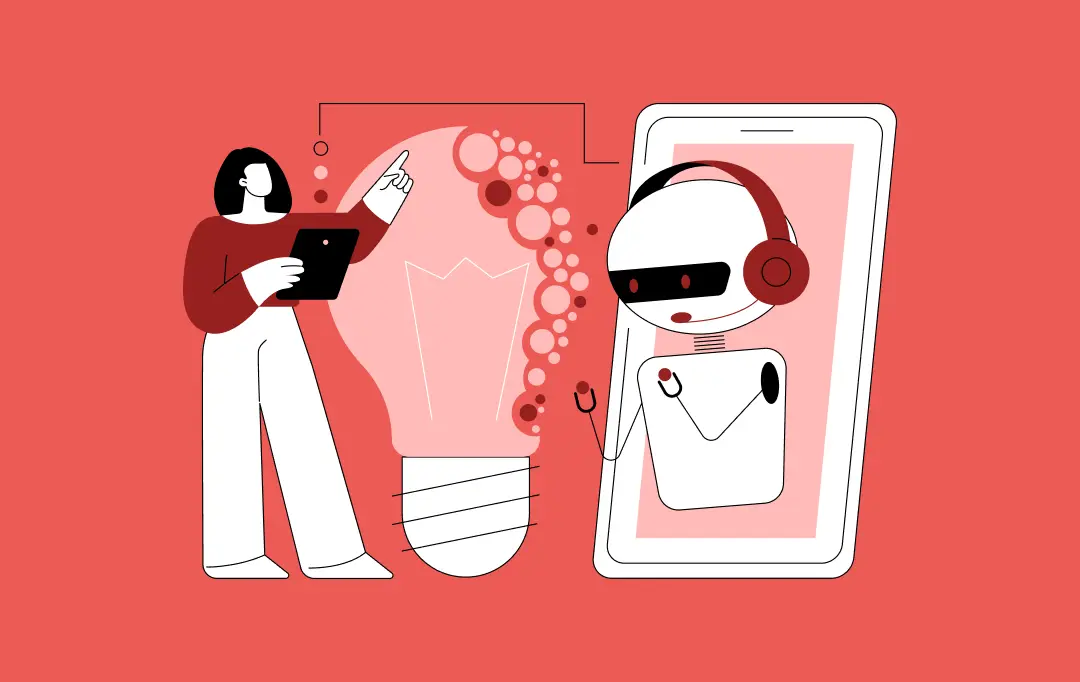
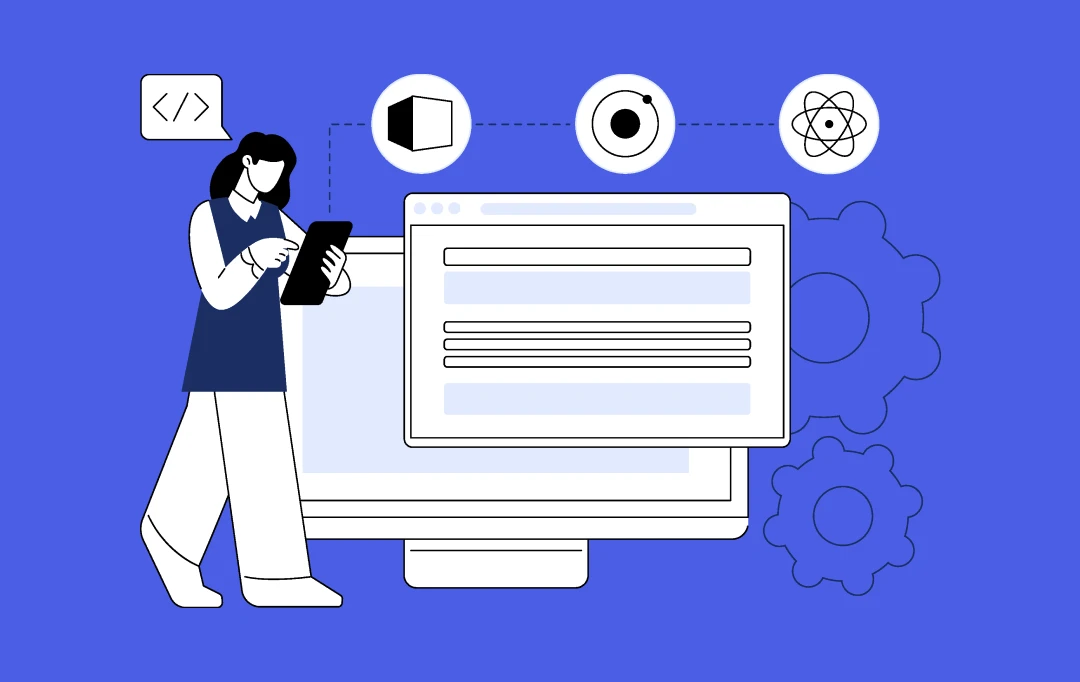
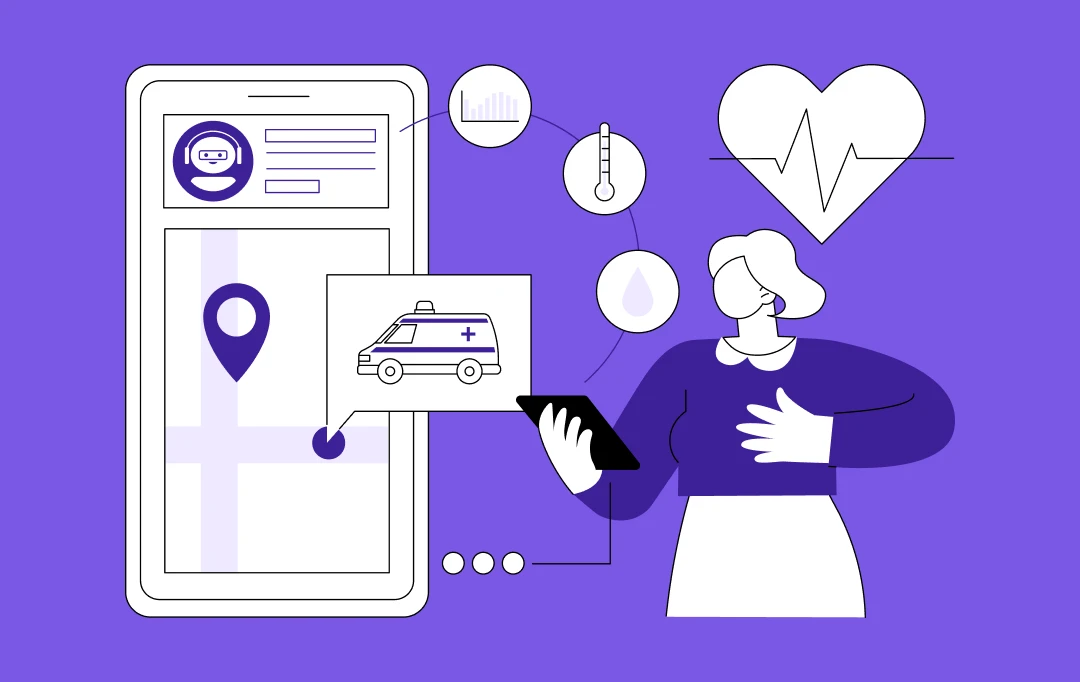

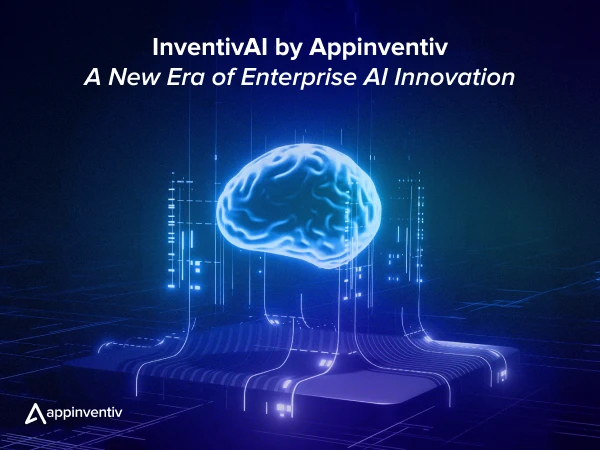
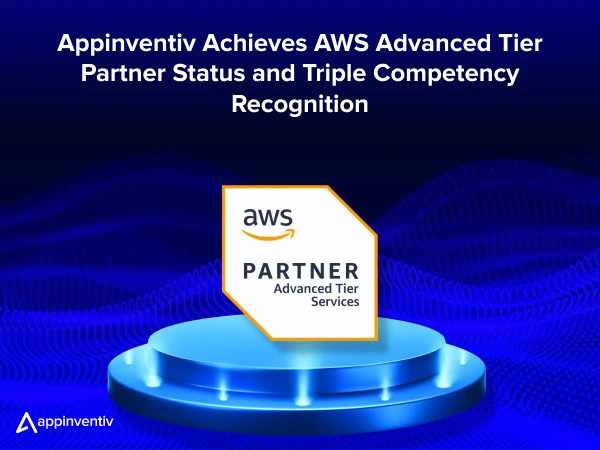
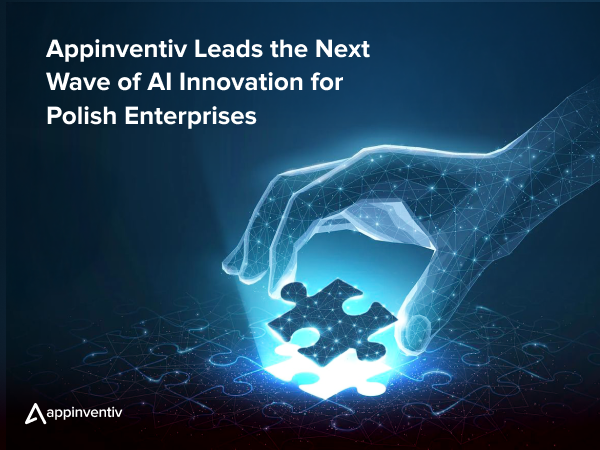
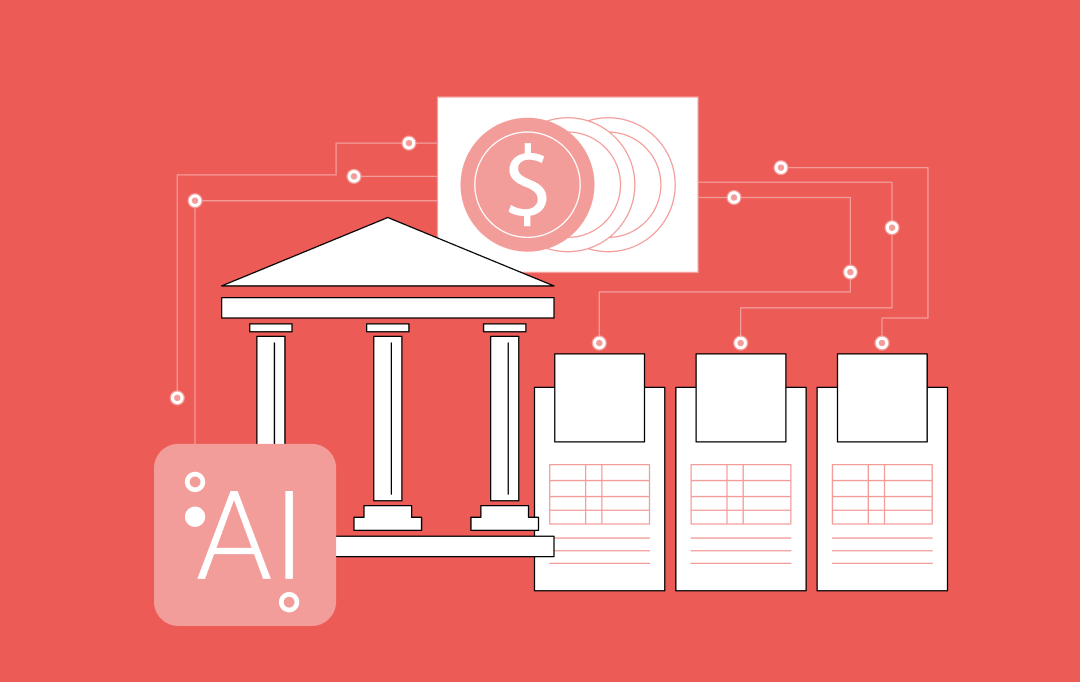


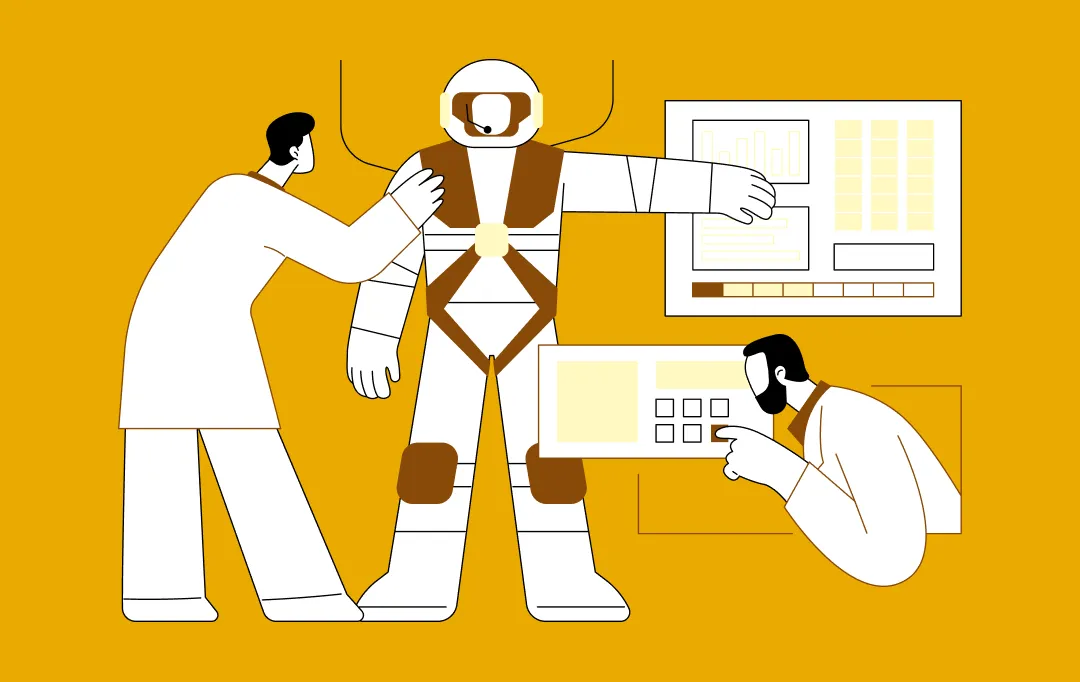
![70 Points Apple App Store Submissions Checklist [2019 Edition]](https://appinventiv.com/wp-content/uploads/2018/05/70-Points-Apple-App-Store-Submissions-Checklist.png)

